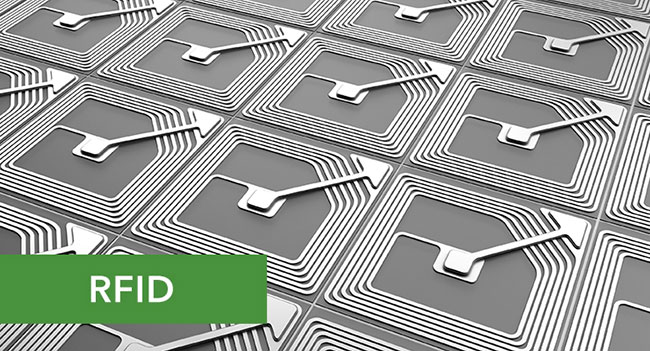Difference between NFC and RFID
There seems to be some confusion between the two technologies RFID and NFC. Although they are similar in many ways, there are some differences between the two technologies. Let's find out the difference between NFC and RFID through the following article!
How is NFC different from RFID?
There are many similarities between RFID and NFC, but there are also some sharp contrasts. The main difference between these two technologies is the range of information collected.
- Near Field Communication (NFC) only has a range of about 4cm (in most cases phones).
- Radio Frequency Identification (RFID) uses radio waves and antennas to help expand the range that data can be read. RFID also has two types of tags - passive and active.
Are there any power requirements that differ between the two technologies?
Have. NFC uses power from the phone to read data embedded in tags or labels. RFID tags can be passive or proactive as outlined above. This means that RFID tags will use energy to transmit data.
For systems that read data from both the NFC tag and the RFID tag, RFID will use a bit more power, because they are running the antenna system and depending on how the RFID system is set up, setting Being constantly read and tagged with data transfers will increase the energy usage of this system.

Is there a cost difference between NFC and RFID?
Yes, NFC is usually a cheaper solution, since there is no additional technology if you use them for advertising or customer information (the cost of the reader is in the customer's phone).
On the other hand, RFID can be a complete tracking solution for assets, tools, shipping containers, etc. This is a case where the range of RFID tags and tags is diverse. For example, active RFID labels encased in plastic, metal or hard rubber covers can range from $ 4 to $ 20, depending on its variants. This means that these types of tags are often used to track high-cost items, such as shipping containers, machines and tools, etc.
Is there a difference in storage capacity between NFC and RFID?
This is not really a question to ask, as RFID and NFC have two very different uses. RFID tags will usually store the tracking number or serial number, allowing you to track individual products with their unique code. This is the case where a large amount of storage is required in tags.
Is NFC or RFID more secure?
Given the nature of the information stored in the RFID tag, they may be a more secure option, because if someone can hack and collect or change the tag's information, they actually only change some of it. SKU (inventory tracking number). While this can be a problem for businesses, it's not a big deal.
On the other hand, NFC tags can easily be reprogrammed, if they are not properly written, i.e. if you find a smart poster or product where the tag is not set to Read-only, you This tag can be overwritten with an NFC writing application, such as NFC Easiwayv Tools.
How is the data transfer rate of NFC and RFID different?
Again, this is not really the question to be asked. NFC data is transmitted almost instantly thanks to the short range, and if the active RFID tag is hundreds of meters away, it may take a bit longer for the data to reach the reader.
How does range on NFC compare to RFID?
This is where RFID really comes in. RFID tags have their own power source, meaning their range can reach 100 meters and more. While NFC only has a range of about 4cm.
Depending on the frequency of the RFID system used, this will affect its range. Here are some approximate ranges for different frequencies in RFID.
- Low frequency (125-134kHz) - Up to 10cm
- High frequency (13.56mHz) - Up to 30cm
- Ultra high frequency (856mHz to 960mHz) - Up to 100m
You should read it
- What is RFID? What role does RFID play in IoT devices?
- Realizing RFID
- Wireless technology for managing people and objects - Future social networks?
- 8 technology-related obsessions of the decade
- Differentiate between TTF and OTF fonts
- What is a worksheet? Differentiate between Worksheet and Workbook
- Differentiate Windows 8 Pro and Windows RT
- Differentiate Apple ID and iCloud
- What is the difference between Hex, RGB and HSL?
- What is the difference between GUI and CLI?
- Differences between Apple Watch Series 4 Cellular and GPS
- Discover the difference between the most secure prison in Norway and the United States
Maybe you are interested
Instructions for easy computer screen recording Steps to fix Microsoft Store error code 0x80004003 in Windows 10/11 Download Free Keylogger 5.4: the software to record all keystrokes of users on the computer 6 steps to handle wet phone The secret behind the piece of meat for 15 years is still sold for 73 million, booking a year to enjoy Six tips for adding wireless devices to your work environment
